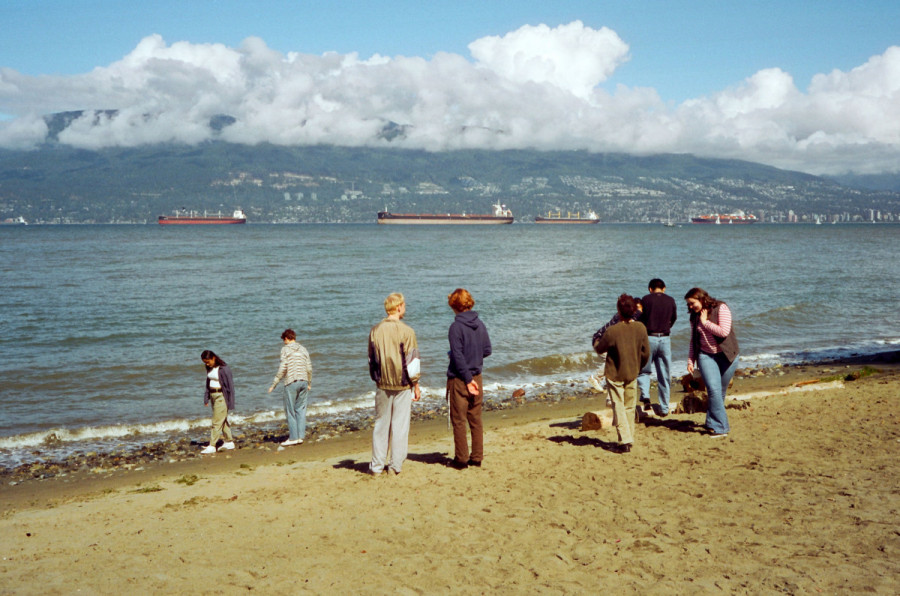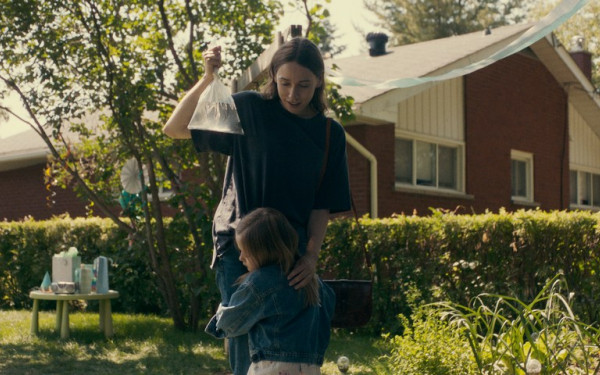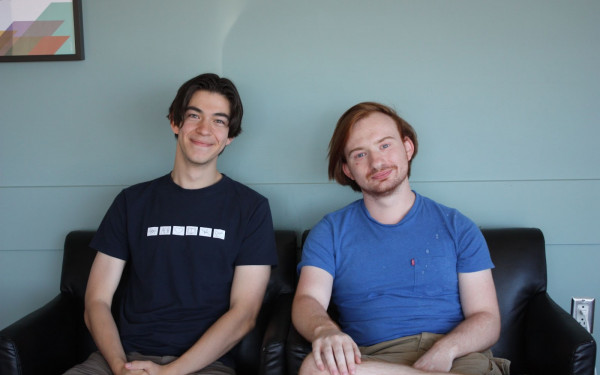Nisha Platzer’s back home: a Level of Intimacy Rarely Seen on Screen
Concordia Alumna Chronicles Communal Grieving in New Documentary
Sixteen-year-old Josh Platzer lost his life to suicide in 1999. His death ruptured the lives of a tight-knit group of Vancouver teens, his parents and his 11-year-old sister Nisha Platzer.
Nisha left B.C. to pursue an undergraduate degree in communications studies at Concordia and honed her skills in experimental filmmaking, only returning years later to seek specialized medical treatment. The only practitioner of this treatment, Platzer learned, was Swan—the mother of Josh’s best friend Sam.
It is from this initial encounter that Platzer’s latest documentary back home takes root. Selected by Cannes Docs for its Docs-in-Progress Canadian Showcase, the film had its world premier at the 2022 Vancouver International Film Festival.
Filmed over the span of five years, this project follows Platzer as she reconnects with Josh’s circle of friends—a world she did not have access to in younger years. Electing not to interrogate the causes behind Josh’s death or preach about the nature of suicide, the film instead centres connections forged in the aftermath of trauma and highlights the process of shared grieving.
Platzer explained in an interview with The Link that she had never intended to make a film about Josh. What began as a series of recorded conversations with Josh’s loved-ones took on cinematic potential when Platzer asked to film the first meeting of Josh’s friend group in over 17 years.
By the time Platzer started collaborating with producer Joella Cabalu, she had already accumulated three years of footage. The long-term nature of this documentary is a testament to Platzer’s respect for its subjects.
“These were people who were teenagers for the most part when they lost [Josh]. It was a tragedy and trauma for them as well. I wanted to really be delicate and avoid retraumatizing anybody,” said Platzer. “I’m building relationships with them because I want to be in their lives, not just because I want to make a film about them.”
For Platzer, it was necessary to ensure the filming process was never intrusive and that Josh’s friends felt comfortable enough to recount their stories on their own terms. Consequently, back home’s interviews can hardly be categorized as intrusive. Avoiding traditional journalistic camerawork, Platzer’s shots linger on hands, mouths and the background details of her immediate surroundings.
When Josh’s friend Sara is first introduced, no title cards appear on screen, and the audience is greeted with shots of ferns, fences and the crossed legs of Sara and Platzer as they sit in the grass. Sara laughs, commenting on Platzer’s continuous filming.
“Do you want me to stop?” asks Platzer.
“It’s scary but kind of fun at the same time,” Sara replies.
This level of respect is admirable and, more importantly, allows back home to capture a level of intimacy rarely seen on screen. The film’s most emotional episode is visually nothing more than a hastily shot conversation between Josh’s friends. Immersed in warm lights and wine, they recount the night of Josh’s suicide; the sincerity with which they do so would be hard to come by in traditional documentaries.
This is where the magic of back home lies. While at first it feels like the audience is intruding upon something not meant for them, the warmth and vulnerability on display—including by Platzer herself—invites viewers to share in the grieving process with them.

That’s not to say that the film is only carried by the strength of its emotional subject matter. back home is a visual feast thanks in large part to Platzer’s use of film. Gorgeous 16mm shots fire off countless nerve endings. Sky-dominating mountains, bare feet balanced on train tracks, and bus rides down industrial corridors all equally ooze colour and depth.
Non-traditional to the core, Platzer also experiments with film processing techniques throughout. She immersed film in seawater and concocted a unique film developer out of plants from nearby mountains as a testament to Josh’s favourite haunts. Platzer explained she even mixed some film strips with Josh’s ashes.
“You have these really physical representations of place, of [Josh] and his actual body in the materiality of the film,” said Platzer. “That produces these different textures and patterns on the emulsion and you can kinda see that throughout.”
Despite these tributes to Josh’s life and memory, it can’t be denied that back home’s emotional core rests in the relationships Platzer forges with Sara, Swan, Sam and other loved ones Josh is survived by.
Throughout, Josh rarely descends from his almost mythical status. With photos of a skinny, red-headed youth, Nirvana CDs, a stolen copy of The Catcher in the Rye, letters to friends detailing hypothetical bank robbery plans, Platzer does a fantastic job of conveying a volatile, sensitive soul through these objects left behind. Even more profound, though, are the conversations, the pained expressions, the shared laughter that happen over these documents.
There is only one scene in which footage of Josh appears. Platzer shows her parents a never-before-seen home movie of him as a toddler. Her mother and father watch their round-faced, ginger-haired son roll across picnic blankets spread on the lawn. They laugh as he puts toys in his mouth and splashes in a kiddie pool. The silent footage continues—their eyes betray the weight of their memories.
In the end, that’s all back home really is. There is no soaring catharsis, no tear-stained confrontations or revelations from the past. Instead, the film slowly but consistently pummels viewers with quiet moments of grief, joy and connection. By the time the cameras stop rolling, the wound of Josh’s death remains open—perhaps even more raw than before—but it is a pain bared together.
This article originally appeared in Volume 43, Issue 7, published November 22, 2022.


_600_832_s.png)

2web_600_375_90_s_c1.jpg)

